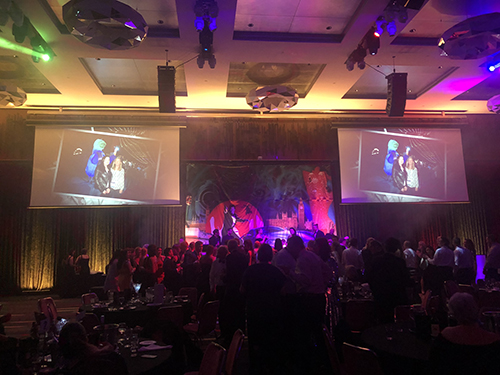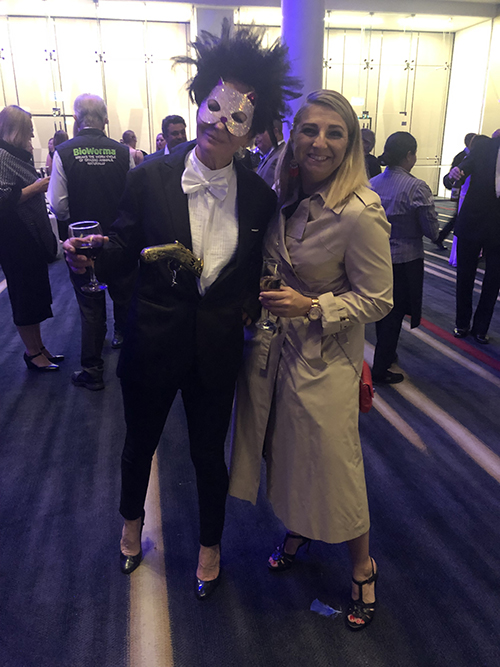Bain Fallon Memorial Lectures 2019
We’ve just returned from a wonderful week of equine veterinary science at the 2019 Bain Fallon Memorial Lectures, hosted by Equine Veterinarians Australia. The focus on skin and eye conditions and difficult lamenesses provided lots of useful information for practitioners.
2019 award winning delegates
Named in honour of two of Australia’s greatest equine vets - Murray Bain and Peter Fallon - and with speakers from North Carolina, Davis and Hong Kong, the Bain Fallon is the most popular equine veterinary conference in Australia. Professor Brian Gilger delivered the most recent knowledge, diagnostics and treatments on eye problems; Professor White updated our understanding of the causes and management of itchy horses, auto-immune and pigment skin diseases and Dr Paul Robinson filled us in on advances in diagnostic imaging and the most recent findings on suspensory ligament conditions.
Another problem that affects an increasing number of our horses is altered insulin metabolism (IR) ie equine metabolic syndrome and PPID. The collection and handling of blood samples for insulin testing has profound effects on the usefulness of the results. New research on storage and analysis of samples was presented - along with the effect of worming in PPID horses. Worm eggs re-appeared in the manure sooner and the numbers were higher than in non-PPID horses, further evidence that we should routinely use faecal egg counts as the basis of any worming program – it also helps prevent/delay resistance.
Kristie with Dr Gillian Burns (Lf) and Dr Derek Major (Rt)
The itchy horse, a huge topic - especially when it’s not caused by insects! Rule of thumb to keep in mind is that if your horse is only seasonally itchy, it’s most likely due to pollens or plant allergies; if the itchiness occurs after a topical treatment such as shampoo, a wash or dip, think ‘contact allergy’, and if it’s itchy all year round, think reaction to moulds, dust or a food allergy. Food allergies should be at the bottom of the list because they are so very, very rare in horses. Also rare are the congenital and genetic skin conditions that can occur in horses - including EB (epidermolysis bullosa) seen mostly in Belgian foals, French and Italian draft breeds and donkeys; HERDA (hereditary equine regional dermal asthenia or hyperelastosis cutis) more frequent in quarterhorses, paints and appaloosas. The importance of biopsy and, where available, genetic testing, affirms the saying that ‘…a lump is just a lump, and a bump is just a bump, until you biopsy…’ (Dr. Danny Scott, Cornell University).
Research on another distressing condition, similar to pastern dermatitis, that causes swelling, thickening and hardening of the skin (most commonly in Shire, Clydesdale and Belgian horses) was presented. Called chronic progressive lymphoedema or CPL (in humans = elephantiasis), it is thought to be due to abnormalities in the elasticity components of the skin. Topical agents such as sulfur-salicylic acid containing shampoos or 50% propylene glycol - can reduce the hyperkeratosis, but must be continued for life.
The trainings and wetlabs on eye conditions were practical and hands-on. With the most recent developments in ophthalmologic examinations and advances in therapy and management for uveitis and recurrent uveitis – the most common cause of blindness in horses – these sessions were gold.
Dr Stewart talks to a delegate about diet analysis
And, most exciting for Jenquine was the launch of our veterinary clinical nutrition diet analysis service AND the launch of our new product, all-4-feet®! Although computer-based, diet-analysis software packages that simplify diet evaluation are widely available, they should be used primarily as a guide - not the ultimate answer – and care must be taken in interpretation of their output. The main disadvantages include the use of NRC (2007) values – these are minimum, average intakes to sustain life in an average healthy horse within the population – making the results applicable to less than 50% of horses. In reality, requirements vary considerably. Horses with a range of veterinary clinical conditions have increased or decreased requirements, for which the NRC makes no provision. Other limitations include the assumption that body weight is linearly related to requirements; the use of values derived from data in other species; the emphasis placed on absolute values; the suitability and balance of the source of energy which is critical in terms of clinical health, growth, performance, and lack of discrimination between the practical demands of different types of exercise, fitness, environmental conditions and terrain. Finally, the needs of miniature breeds, donkeys, extreme environments and animals with veterinary clinical conditions are not considered.
Dr Jennifer Stewart and Dr Derek Major at the Equine Veterinary & Dental Services stand
Recognising the ‘one-size-fits-all’ approach doesn’t work in every situation and the need for precision nutrition, Jenquine has progressed spreadsheet-based diet-analyses from the basic foundations to include our expanding knowledge of equine clinical nutrition, epigenetics, achieving genetic potential, avoiding growth disorders and supporting athletic performance. Jenquine incorporates NRC (2007) guidelines with research in the decade since the 2007 publication, results from the German Equine Feeding Standards, Institut National de la Recherches Agronomique INRA, and our own databases. Dr Jen Stewart combines 40 years experience as an equine veterinarian and over 20 years of international clinical, racing, stud and performance nutrition with all breeds to provide evidence-based, scientifically sound applied, practical nutrition and equine clinical nutrition.
It is a fundamental principle of nature that every horse and pony requires the same basic nutrients - only the amount required varies. Horses in work require the same nutrients as spelling or growing horses, broodmares, convalescing or aged horses and ponies, donkeys and minis - but in larger amounts. all-4-feet ® is an established feed which has been used by leading veterinarians, owners, trainers and Waikato studs for over ten years. Formulated by Dr Jen Stewart, all-4-feet ® is due for release in Australia early Spring 2019. It is a concentrated feed supplement for all horses and ponies – especially those with or at risk of inflammatory conditions and whenever a low starch/sugar/NSC, high fibre diet is indicated. When all-4-feet ® is fed according to the guide, gut, biome and general health are supported - and the risk of diet-related veterinary clinical conditions is reduced. Contact us to find out more or join our mailing list to be notified when it’s available to purchase.
We finished off a big week with a wonderful James Bond themed gala dinner. Full off food, fun and plenty of dancing! Visited by so many great vets – Prof Allan Davies, Dr Alistair Murdoch, Dr Gillian Burns, Dr Robyn Mather, Dr Doug English, Dr Allan Giles, Dr Andrew Hunt, Dr Melanie Quick….the list never ends!! The equine veterinary industry is full of amazing people, doing amazing things and we are very proud to be among them!
Team Jenquine
EQUINE CLINICAL NUTRITION







